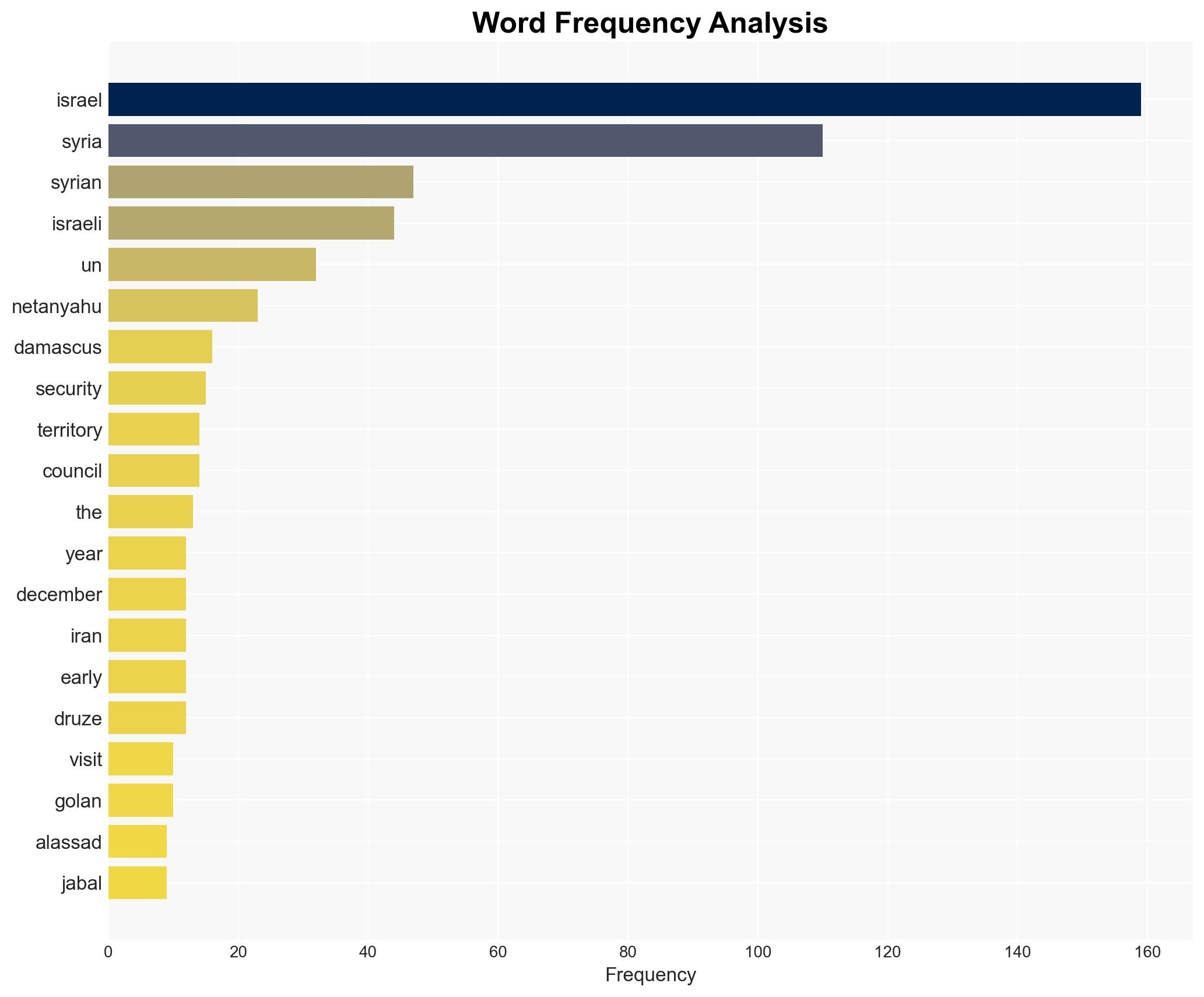After Israel PMs trip to occupied Syria is a deal off the table – Al Jazeera English
Published on: 2025-11-20
AI-powered OSINT brief from verified open sources. Automated NLP signal extraction with human verification. See our Methodology and Why WorldWideWatchers.
Intelligence Report:
1. BLUF (Bottom Line Up Front)
Confidence Level: Moderate. The most supported hypothesis is that Israel’s recent actions in occupied Syrian territory are indicative of a strategic posture to maintain military and political leverage rather than an immediate interest in a comprehensive peace deal. Recommended action includes diplomatic engagement to de-escalate tensions and explore confidence-building measures.
2. Competing Hypotheses
Hypothesis 1: Israel’s actions in southern Syria, including Prime Minister Netanyahu’s visit, are primarily aimed at reinforcing its territorial claims and military presence, signaling a hardline stance rather than a genuine pursuit of a peace deal.
Hypothesis 2: Israel’s activities are part of a calculated strategy to pressure Syria into negotiations, leveraging military presence as a bargaining chip to achieve a favorable peace agreement.
Assessment: Hypothesis 1 is more likely given the historical context of Israel’s territorial strategy and recent statements by Israeli officials indicating an entrenched position. The lack of progress in negotiations and the expansion of military activities support this interpretation.
3. Key Assumptions and Red Flags
Assumptions: It is assumed that Israel’s military actions are primarily defensive and aimed at countering Iranian influence in Syria. The assumption that Syria is willing and capable of engaging in meaningful negotiations is also critical.
Red Flags: The lack of transparency in negotiations and conflicting reports from Israeli and Syrian sources suggest potential misinformation or strategic deception. The sudden hardening of Israel’s stance could indicate internal political pressures or a shift in regional alliances.
4. Implications and Strategic Risks
The ongoing military presence and lack of a peace agreement could exacerbate regional instability, potentially leading to increased military confrontations. The involvement of external actors, such as Iran and the United States, heightens the risk of broader geopolitical tensions. Economic sanctions or cyber operations could be employed as tools of coercion, further complicating the situation.
5. Recommendations and Outlook
- Engage in multilateral diplomacy involving key stakeholders to de-escalate tensions and explore confidence-building measures.
- Monitor Israeli and Syrian military movements to anticipate potential escalations.
- Best-case scenario: A temporary ceasefire and initiation of structured peace talks.
- Worst-case scenario: Escalation into a broader regional conflict involving proxy actors.
- Most-likely scenario: Continued military posturing with intermittent diplomatic engagements.
6. Key Individuals and Entities
Benjamin Netanyahu, Israeli Prime Minister; Ahmed Alsharaa, Syrian President; Donald Trump, former U.S. President (contextual reference).
7. Thematic Tags
Regional Focus, Middle East, Israel-Syria Relations, Geopolitical Tensions, Military Strategy
Structured Analytic Techniques Applied
- Causal Layered Analysis (CLA): Analyze events across surface happenings, systems, worldviews, and myths.
- Cross-Impact Simulation: Model ripple effects across neighboring states, conflicts, or economic dependencies.
- Scenario Generation: Explore divergent futures under varying assumptions to identify plausible paths.
Explore more:
Regional Focus Briefs ·
Daily Summary ·
Support us





